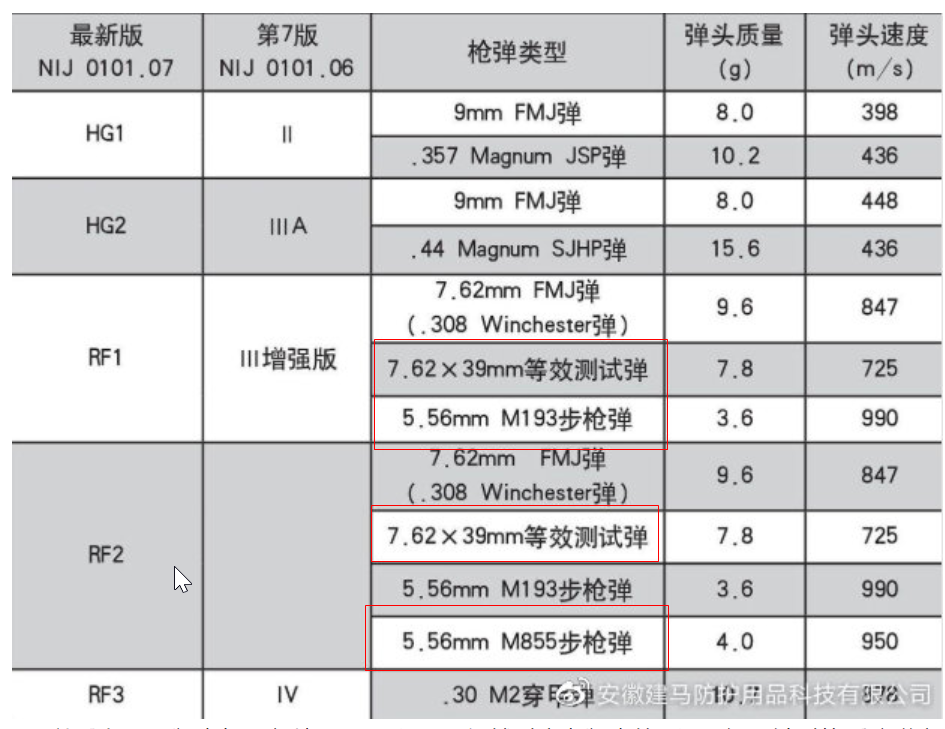NIJ 0101.06 vs NIJ 0101.07 what is the difference
for developers and testers of bulletproof equipment, the development and testing standards should always focus on hypothetical major enemies. Standards that can improve the protective area or indentation value should be considered, especially regarding bullet types, as domestically the main type is steel bullets, while internationally it is mainly copper bullets.
The comparison between the 07 version and the 06 version shows that HG1 and HG2 still correspond to the old versions of level II and IIA, respectively, for soft body armor. For the set of bullet types targeted at soft body armor, RF1-3 correspond to levels III and IV, targeting rifle bullets, and include newly added 7.62×39mm equivalent test bullets and 5.56mm M193 rifle bullets, which can be considered as higher requirements to cope with more complex environments.

As a human body armor equipment, the most important concerns for users are whether it can provide protection, whether the protected area is sufficient, and the severity of injuries. Translated into professional terms, these are bulletproof level, protective area, and indentation value. Regarding bulletproof level, different customers have different requirements. For example, to deal with environments where general handgun bullets are present, wearing traditional level II or level IIIA soft body armor can resist six bullets from different angles and positions, with level IIIA offering higher protection.
To deal with rifles like the AK, hard armor plates are necessary. Co-defense or independent defense are both options, such as wearing soft body armor internally and externally attaching co-defense plates or directly using level IV independent defense plates, which can resist rifle bullets from three different positions. In terms of protective area, there is generally a minimum standard, such as the US standard requiring more than 0.25 square meters. The area of soft body armor needs to be larger, mainly protecting the major organs of the body. If there are special requirements, the bulletproof area can be expanded, and bulletproof materials can be customized for the groin, shoulders, hands, and other positions. As for the indentation value, the US standard requires that the indentation from the shooting test should not exceed 44mm, which is considered acceptable by the human body.
China's GA and GJB standards require an indentation value not exceeding 25mm, which is more stringent. Of course, there are many specific details in the shooting test, which are not listed here. Those interested can check them out for themselves. As a user, choosing products with the corresponding bulletproof level for different environments is sufficient. For example, security personnel and police abroad generally need to be equipped with co-defense or independent defense plates, as firearms are more freely available. In China, a soft body armor vest is generally sufficient, with higher-level plates kept as a backup just in case. For combat environments, plates are undoubtedly essential, as the lethality of ammunition fragments is also significant.
In general, for developers and testers of bulletproof equipment, the development and testing standards should always focus on hypothetical major enemies. Standards that can improve the protective area or indentation value should be considered, especially regarding bullet types, as domestically the main type is steel bullets, while internationally it is mainly copper bullets.